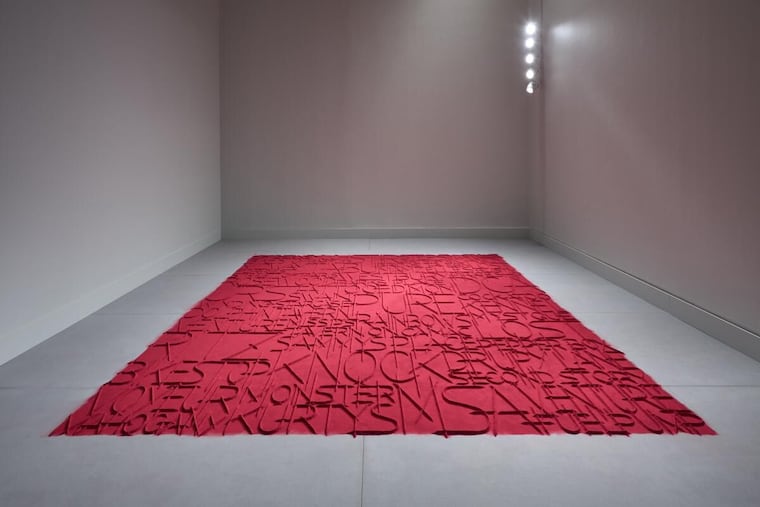In new Philadelphia Museum of Art exhibit, Korean artist honors and celebrates Philly’s queer bars and spaces
Experience a slice of the city’s rich LGBTQ history via "Where He Meets Him in Philadelphia" by artist Inhwan Oh, alongside artwork from more than two dozen Korean artists.

Queer bars and clubs may come and go, but a new artwork on display at the Philadelphia Museum of Art hopes to immortalize the ones the city has lost.
The artwork, first reported by Billy Penn, is by Korean artist Inhwan Oh, who uses incense powder to spell out the names of dozens of now-defunct gay and lesbian establishments in Philadelphia. Titled Where He Meets Him in Philadelphia, Oh looked to his own experience as an openly gay man who came out during his studies in New York during the early ‘90s to bring this work to life, according to the exhibit’s audio tour.
The names of former bars like 13th Street’s Fuel Pump or Center City’s Drury Lane are intricately placed throughout the room-sized piece of art. Oh’s goal of using incense powder is to underline the temporariness of moments and institutions that are lost with time — just as incense burns and floats away so do many aspects of life with the passage of time, said one of the exhibit curators Elisabeth Agro.
“Because he is a citizen of the world, Oh wants this work to connect to communities around the world whether they’re open towards queer culture or not,” Agro said. “The fact that he privileges ours as being in this crimson color means that we’re open towards queer culture. He thinks Philadelphia is really embracing and he loves that. It was very important for him to bring this work forward here.”
Oh has displayed this artwork previously in Seoul and Copenhagen under the same premise.
When displayed, the incense powder is lit, which releases aromas that, according to Agro, can transport viewers back to the themes of Oh’s work from the sense memory. The experience calls viewers to be present in the moment, as time is fleeting. However, due to fire safety measures, incense burning will only be viewable on a screen in the display room.
According to Agro, this collection of art, called “The Shape of Time: Korean Art after 1989,” comes at a time when the world over is increasingly interested in Korean music, arts, and pop culture. K-pop mega-stars like Psy, BTS, and Blackpink finding an audience in the U.S. to South Korean film and television, winning some of the industry’s top awards, like the Academy Award-winning film Parasite or the Emmy award-winning series Squid Game, are just a handful of the Korean acts and artworks that have enamored Americans in the past decade, she said.
Despite these breakthroughs, much of Korea’s history, politics, and traditions go unnoticed. This exhibit hopes to change that, said Agro. In September, she told the Inquirer that the art is “designed to be a mind-bender that pulls you into a contemplation of time and space, and the influence of past, present, and future.”
Explore the rich history of Philadelphia’s former queer bars and clubs and the other two dozen Korean artists on display at the Philadelphia Museum of Art, available now through Feb. 11, 2024.